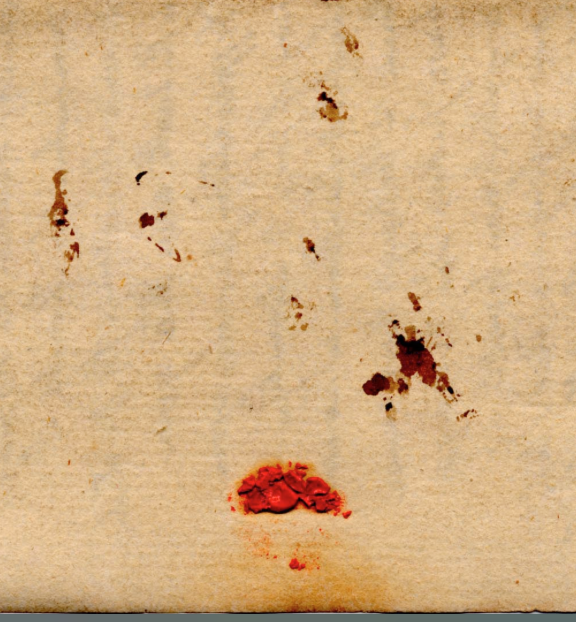While finishing up work on a set of Blake’s letters from the Westminster Archives, I ran across a question that has made me a minor expert on a very minor piece of history: the difference between wafers and wax seals in nineteenth-century England. My curiosity about the difference in these two methods of sealing letters came about when I encountered the following seal on Blake’s Letter to Mr. Butts, 10 January 1802:
Without glancing at Bentley’s Annotated Catalogues of William Blake’s Writings, I noted in the letter’s provenance information that a wax seal was used for this letter. I then turned to check my description with Bentley’s who, you guessed it, disagreed. He claims that the seal pictured above is actually a wafer. This was the first time I have been forced to pause and ask myself what the difference between these two types of seals is, as I’ve always either agreed with Bentley’s observation or somehow felt that I could discern the kind of seal on a letter with a quick glance.
Since asking this question to myself last week, I have visited a few historical and antiquarian websites and have learned some interesting details about letter seals.
Wax seals were made by the melting of lac or rosin with turpentine and pigments, and they were applied by first melting wax with a wax taper and then applying the softened stick of wax to the part of letter where the seal was to be placed. The seal was made by pressing down hard, without movement, in the center of the softened wax. As might be expected, this often caused drips and wax runs and was the messier of the two options. Also, wax seals were usually used for important or official correspondence throughout the entire nineteenth century.
A wafer is an early predecessor of the sticker, usually made from wheat flour, which was mixed with water so as to form a thin paste. In short, wafers are a kind of dry paste disk, which were used in less official correspondence in the first half of the nineteenth century. By the middle of the century, wafers became generally used, but later in the century they faded from popularity when wax seals made a popular come-back in the 1880s and 90s.
With these definitions and a sense of these seals’ history, I returned to Blake’s letter to Mr. Butts, and I am still inclined to disagree with Bentley and record this as a wax seal primarily because of what appear to be red wax stains from drops or runs on the bottom of the first page.
Nevertheless, I will seek further advice on this question before definitively landing on an appropriate seal description. Source Sites:
http://www.victorianpassage.com/2009/07/unfolding_the_mysteries_of_sea.php
https://herreputationforaccomplishment.wordpress.com/2015/08/27/wafer-etiquette/


